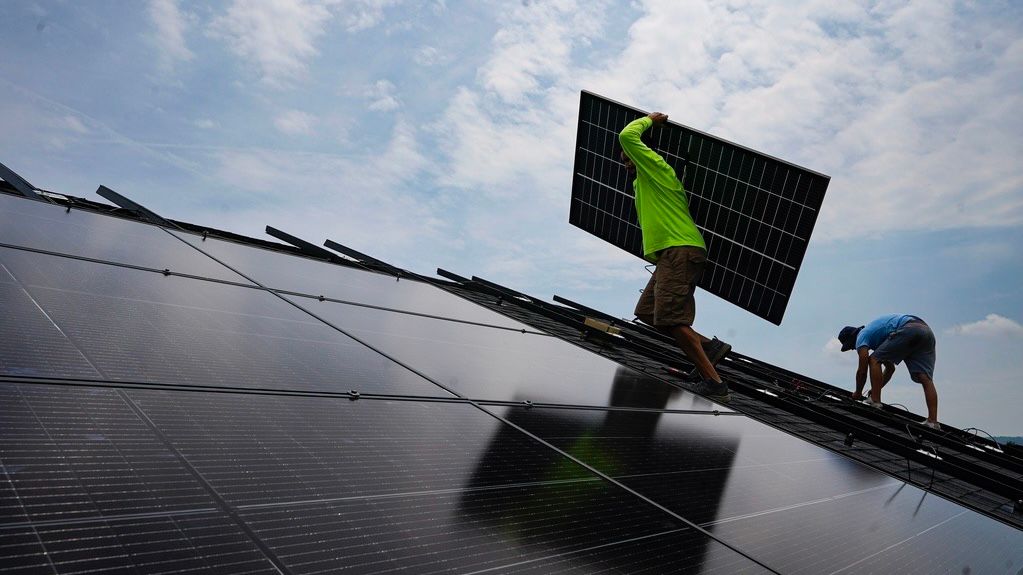The United States added more solar energy to the grid than ever before in 2023, the Solar Energy Industries Assn. reported Wednesday. The amount of new electricity-generating capacity from solar increased 51% compared with a year earlier and marks the first time that a renewable electricity source has made up more than 50% of capacity additions in a single year.
“If we stay the course with our federal clean energy policies, total solar deployment will quadruple over the next ten years,” SEIA president and CEO Abigail Ross Hopper said in a statement. “The Inflation Reduction Act is supercharging solar deployment.”
Enacted in 2022, the Inflation Reduction Act extended a 30% tax credit for business and residential solar projects through at least 2035, or until emissions from U.S. electricity production are 75% less than 2022 levels. Some solar projects are eligible for even higher tax credits, including those that are used for domestic steel manufacturing or situated in low-income communities and areas with high employment in the coal, oil and natural gas industries.
In 2023, the solar industry grew in every market segment, including utilities, which added 22.5 gigawatts of new capacity, as well as individual homeowners, 800,000 of whom added solar to their rooftops. Texas had the most solar installations, followed by California, which has seen a slower uptake on rooftop solar installations since enacting new policies that affect how much money homeowners can earn from their panels.
Over the last year, the country’s solar industry added 32.4 gigawatts of electricity-generating capacity — enough to power about 24 million homes. By 2034, another 673 gigawatts of solar capacity could be added in the U.S.— enough to power more than 100 million households, according to the SEIA.
The association noted, however, that policy outcomes from the upcoming presidential election could affect the rate of solar expansion, reducing it by as much as 200 gigawatts over the next ten years.
“A high case for U.S. solar with increased supply chain stability, more tax credit financing and lower interest rates would increase our outlook 17%,” said the lead author of the U.S. Solar Market Insight 2023 Year in Review report, Michelle Davis.
“A low case with supply chain constraints, less tax credit financing and static interest rates would decrease our outlook 24%,” she said. “Various policy and economy outcomes will have big implications for the U.S. solar industry.”



